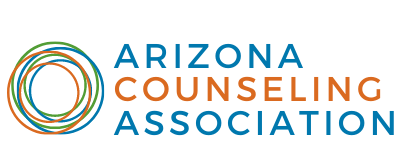

Poster Presentation
Music Therapy and Counseling Integration for Eating Disorder Treatment
Original Research
Poster Check-In
Introduction | Background
ABSTRACT:
The music therapy and counseling field have many key crossover elements that most professionals and the public are unaware of. While mental health counseling focuses primarily on psychotherapeutic interventions, music therapy combines those verbal processes with experiential musical modalities to treat patients of all populations and settings. As a board certified music therapist and upcoming counselor, the author of this research chose to create a study that looked directly at how the integration of these two fields can be used cohesively in sessions specifically when working with persons diagnosed with eating disorders. Nine interviews were completed with a combination of music therapists, counselors, and psychologists around the United States who directly treat or have specialized in working with eating disorders throughout their career. In addition, published literature, session materials, and presentations were reviewed in order to determine common factors used within the two fields. Results not only proved the validity of counseling techniques and music therapy interventions working together, but also showed how pointed this collaboration can positively impact the eating disorder population when targeting the creative part of the brain. Conclusions found that when facilitated in conjunction, music can access and evoke the deep emotions surrounding the trauma that accompanies an eating disorder, then verbal psychotherapy can assist and treat the patient with processing and reflection upon those discovered thoughts to work towards healing.
BACKGROUND:
This researcher experienced working as a direct care staff in a residential eating disorder facility, as well as facilitated music therapy successfully in collaboration with other therapeutic disciplines in residential facilities with patients of different populations. Through these opportunities and this researcher’s entrance into the CMHC graduate program the question came about as to how exactly these two fields of counseling and music therapy can be used directly to enhance eating disorder treatment.
PURPOSE AND GOALS:
Obtain findings on how the integration of music therapy and counseling can be facilitated within general eating disorder treatment through 1. Literature review, 2. Informational interview. In addition, published literature, session materials, and presentations were reviewed in order to determine common factors used within the two fields.
Methods
- Informational Interviews: Five professionals from the traditional psychotherapy field and four board certified music therapists were interviewed on their experiences working with clientele with eating disorders. The professionals from the psychotherapy field were given to the researcher as references from the director of the CMHC program at NAU, and the music therapists were found via an advertisement the researcher posted on a national music therapy Facebook page. All professionals met a criteria of at least one to two years of direct clinical contact with the eating disorder population. They were all contacted to set up a meeting, and were either interviewed via phone call or through Zoom. Nine standardized questions were asked to each interviewee and individualized followup questions were asked as needed.
- Literature and Other Materials Review:
- Literature review: The following key terms were used to search for published scholarly articles through EBSCO Academic Search Premier search engine, as well as on the American Music Therapy Association published journals portal:
- Literature review: The following key terms were used to search for published scholarly articles through EBSCO Academic Search Premier search engine, as well as on the American Music Therapy Association published journals portal:
Eventually this was filtered down to 21 sources cited in the research, including the articles found from the search engines, as well as conference presentation videos from the American Academy of child and adolescent psychiatry 67th annual conference institute 6 video series on Eating disorders, a conference presentation on music therapy and eating disorders from the 2018 American Music Therapy Association national conference provided from one of the interviewees, and session materials from three therapists (Katherine Lee, MT-BC, Lily Wilhelm, LAC, Jess Rushing, PhD, MT-BC).
RESULTS:
The following similarities and differences within eating disorder treatment were found when comparing all of these methodology materials:
Similarities- Therapeutic approaches, session structure, treatment/intervention goal crossovers (i.e. writing worksheets vs. songwriting, traditional discussion vs. lyric analysis, MT PMR vs. traditional PMR, mt guided imagery vs. relaxation scripts, ACT exercises vs. improvisation), discussion questions and points, challenging barriers, fascinating aspects opinions, most agreed the two disciplines could work together, session themes, session outcomes, mostly group facilitation is focused on in residential treatment rather than individual, and most non-music therapists did not know much about the field of music therapy.
Differences- The depth of how far each discipline would go into trauma and other discussion (Traditional psychotherapists have more training to go deeper into topics), it is less common for music therapists to be on a treatment team vs. an almost certainty with traditional psychotherapists to be on the team, music therapists had less direct contact time with the clients than traditional psychotherapists, psychotherapists typically stick with verbal processing and writing exercises whereas music therapists use multiple engagements and forms of processing.
When comparing general session structure between the two disciplines, it is also evident that music therapy interventions would pair easily with the main verbal processing points of a psychotherapy session. The music therapist interventions would not only add another creative engagement for the clients, but would also assist the client in working on multiple neurological processes at the same time when facilitated with skilled counseling modalities.
Conclusion
Results not only proved the validity of counseling techniques and music therapy interventions working together, but also showed how pointed this collaboration can positively impact the eating disorder population when targeting the creative part of the brain. Conclusions found that when facilitated in conjunction, music can access and evoke the deep emotions surrounding the trauma that accompanies an eating disorder, then verbal psychotherapy can assist and treat the patient with processing and reflection upon those discovered thoughts to work towards healing. Because of these findings, it is imperative to closely consider using creative arts therapies in collaboration with more traditional therapeutic treatment when thinking about the eating disorder population.
Live Video Chat with Presenter
Meet the Poster Presenter Here Live - CLICK HERE
Join using the wonder.me application.
Presenter Name(s), Emails, and School
Alexandria Patton, MT-BC
Northern Arizona University
Clinical Mental Health Counseling Program
Email: alliepatton@comcast.net
| Access Date | Quiz Result | Score | Actions |
|---|
Time to Recharge!
Refresh, Recharge, and Reconnect Retreat for Therapists
July 8-10, 2022
Carefree, AZ



